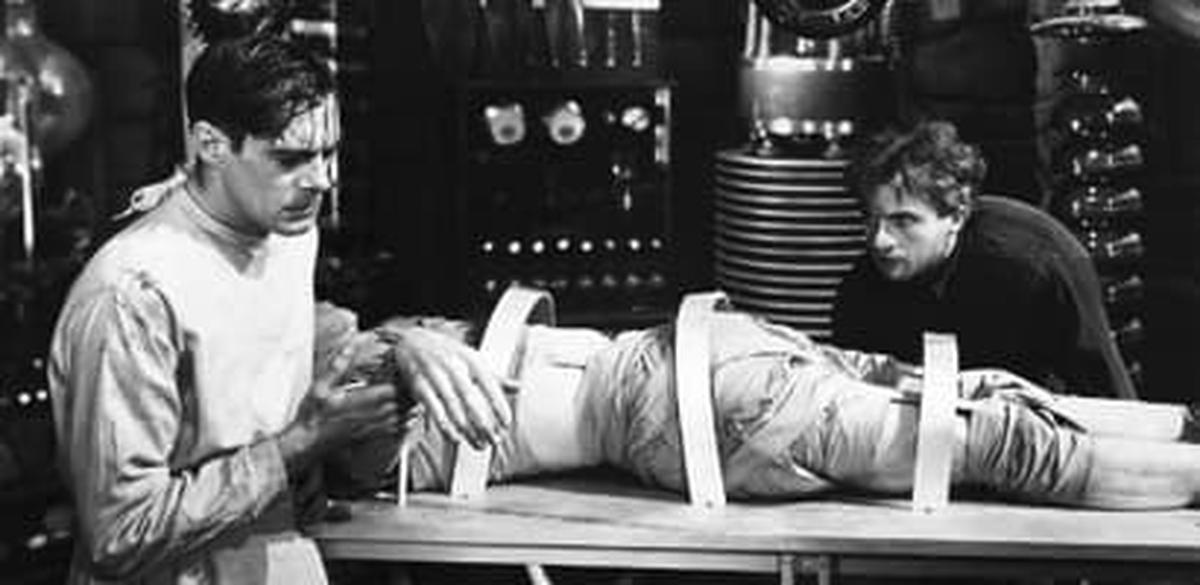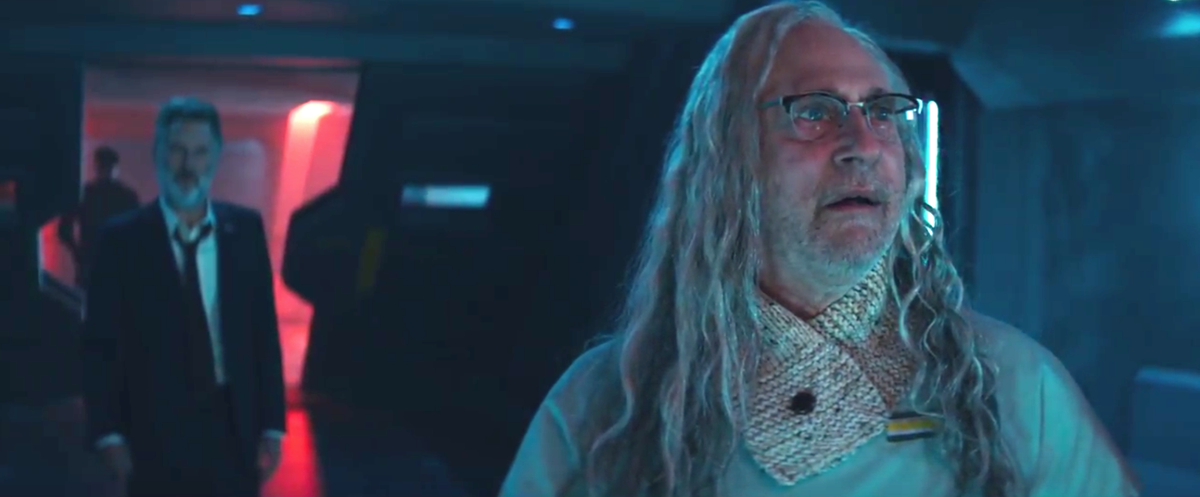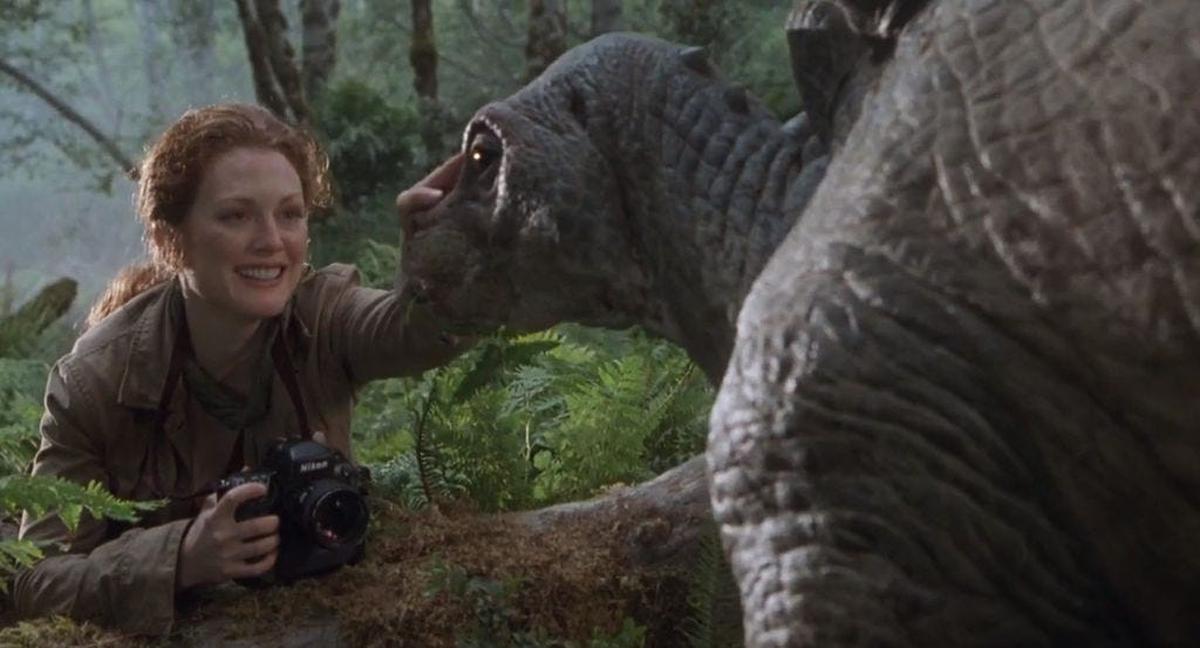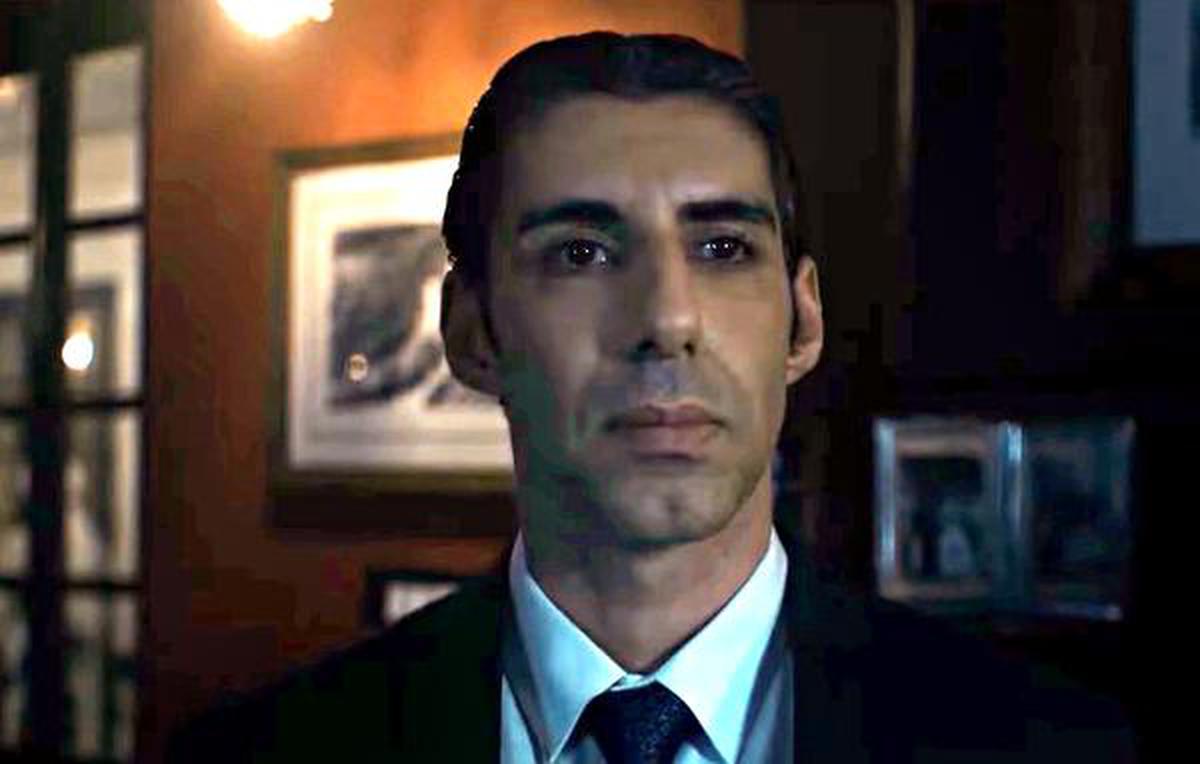“It’s alive! It’s alive!” These lines by actor Colin Clive’s character, seeing his creation coming alive, from the 1931 film Frankenstein, are so iconic that they are regarded as one of Hollywood’s greatest quotes by the American Film Institute. Contrary to what many believe, the monster created by the scientist wasn’t named ‘Frankenstein,’ but is the name of the creator himself. Terminology matters because fascinatingly, until 1834 when Cambridge University historian and philosopher of science William Whewell coined the term ‘scientist’, they were usually termed ‘cultivators of science’, ‘natural philosopher’ or the prejudicial ‘man of science’.
Modelled after ‘artist’, the word for those who use scientific methods to answer questions became ‘scientist’ borrowed from the Latin word scientia (“knowledge”). No wonder they’re often compared with the Greek god Prometheus who defied the Olympian gods by stealing fire from them and giving it to humanity in the form of technology, knowledge, and more generally, civilisation. Interestingly, Frankenstein is based on the novel The Modern Prometheus, while Christopher Nolan’s latest film Oppenheimer is based on a biography titled American Prometheus. With Oppenheimer releasing this week, we look at scientists and their portrayal in cinema that has come a long way; from creating monsters and mad scientists, to becoming their own test subjects or characters to provide comedic relief, to actually celebrating the lives of real-life geniuses.
ALSO READ: ‘Oppenheimer’ movie review: A strange, surreal, stirring saga from Nolan in his element
Where it all began
The Lumière brothers in 1895, were the first to present projected moving pictures to a paying audience using their invention, the Cinématographe, which was a camera, a projector and a film printer all in one, thereby often being credited as the inventors of cinema. In the same year, they made La Charcuterie mécanique (The Mechanical Butcher) which is considered to be the first science-fiction film and so began a genre. 1910’s Frankenstein and 1913’s Dr. Jekyll and Mr. Hyde introduced the concept of mad scientists thereby creating an overlap between the science fiction and horror genres. The 30s and 40s banked on this genre of ‘experiments-gone-wrong’ titles like The Vampire Bat, The Invisible Man, Bride of Frankenstein, Doctor X and Dr Cyclops.

A still from ‘Frankenstein’ (1931)
Like with every other art medium, war played a major role in significantly influencing sci-fi films. During World War II, the development of the atomic bomb increased interest in science fiction. Coincidentaly, Oppenheimer is based on J. Robert Oppenheimer, the theoretical physicist who helped develop the first nuclear weapons as part of the Manhattan Project during this time. From 1938 to 1946, when sci-fi literature flourished, the period was called the Golden Age of Science Fiction. Away from Hollywood, in Britain, Nigel Kneale’s Quatermass series about a scientist became a runaway hit. But in films, until the 60s, the genre consisted mainly of low-budget B movies. This is also when the sci-fi genre added space and alien films to its list; it took Stanley Kubrick’s 2001: A Space Odyssey(1968) for the genre to be taken seriously, and the success ofStar Wars (1977) made it mainstream.
The stereotypes lurking beneath the white coat
After the 80s, a slew of films that had scientists in tertiary roles were typecasted in a certain way. Despite specialising in a specific field, they were shown to be specialists in everything from geology to alien technology. Albert Einstein’s theory of relativity (E = mc2) was the solution to every technical issue, and colourful liquids in every possible shape of beakers and test tubes would adorn their desks. And if the scientists weren’t white, they were most probably Asian… with an accent. Then came the questionable humour that is often milked; from how clumsy they are (Brackish Okun from Independence Day ), body-shaming (Professor Keenbean from Richie Rich) and silly tropes that lead to their Eureka moments (Ray Stantz from Ghostbusters). If that wasn’t enough, there were also a slew of brilliant masterminds who found themselves on the wrong side of the law, like Dr Octopus (Spider-Man 2), Dr Doom (Fantastic Four ), Arnim Zola (Captain America: The Winter Soldier ), Poison Ivy (Batman & Robin) and Dr Henry Wu (Jurassic Park).

A still from ‘Independence Day: Resurgence’
Not only are the scientists ridiculed, but science itself, at times, is taken for granted. There are cinematic liberties and then there are scientific inaccuracies in films that would make Einstein, Newton, Tesla, Curie and Darwin roll in their graves. The 2014 film Lucy had its entire premise based on the futile claim that humans only use 10 per cent of the brain, we defeated aliens in Independence Day (1996) by uploading a computer virus into their spaceship, and even better, the villain in Die Another Day (2002) tries to replace every gene in his body to even look different. Here’s my personal favourite; Michael Bay’s Armageddon (1998) is filled with so many factual errors that NASA uses the film as a part of a training program to teach trainees and see how many mistakes they can spot. The number currently stands at 168.
The ‘mad scientist’ predicament
Speaking of stereotypes, the ‘mad scientist’ character is infamous for its features and traits. For starters, they’re almost always male, with messy hair, a lab coat, maniacal laughter and a weird fascination for either world domination or annihilation. Victor Frankenstein is arguably the first one to be tagged under this category. The next archetypical one came in the form of CA Rotwang in Fritz Lang’s movie Metropolis (1927). It is this character’s laboratory that influenced many movie sets with bubbling apparatus, and arrays of dials and controls. His mechanical hand was also the inspiration for the titular character in Stanley Kubrick’s 1964 film Dr Strangelove.
A still from ‘Metropolis’ (1927)
Post-World War II, the mad scientist trope became more conspicuous. Similar to invention of the atomic bomb, the sadistic experimentation on humans by the Nazis, and the scientific and technological breakthrough during the Cold War gave the general public an impression that science and technology had gone out of control. Unsurprisingly, mad scientists became a common trope in films during this period. According to a survey of 1,000 horror films distributed in the UK between the 1930s and 1980s, mad scientists or their creations have been the villains of 30 per cent of the films; scientific research has produced 39 per cent of the threats, and, by contrast, scientists have been the heroes of a mere 11 per cent.
This trope, somehow, has remained a staple for decades and from the days of Doctor Jekyll of Dr Jekyll and Mr Hyde (1931) and Doctor Génessier of Eyes Without a Face (1960) to Nathan Bateman of Ex Machina (2014). On the flip side, the archetype has given quite a few gems when the subject is infused with humour and/or light-hearted adventure. While Doc Brown from the Back to the Future franchise has become a legendary character, this trope has made way for some excellent comedic actors to deliver some of their finest performances. Case in point; Robin Williams’ Professor Phillip Brainard from Flubber (1997), Jim Carrey’s Dr Robotnik from Sonic the Hedgehog (2020), Rick Moranis’ Wayne Szalinski from Honey I Shrunk the Kids (1989) and Tim Curry’s Dr Frank-N-Furter from The Rocky Horror Picture Show (1975).
Women of science through the lens
Dr Eva Flicker, in her published article in 2002, pointed out that men make up 82 per cent of all film scientists while women are predominantly given the role of scientists in films falling under the action, adventure and comedy genres. She categorised the characters written for women into six classifications:
The Old Maid: The type interested only in work only to later fall for the male lead. Ex: Dr Constance Peterson in Spellbound (1945)
The Male Woman: The woman who is characterised by her harsh voice and unhealthy lifestyle thanks to working in an all-male environment. Ex: Dr Ruth Leavitt in The Andromeda Strain (1971)
The Naïve Expert: The type that does minimal work and doesn’t contribute much to the plot. Ex: Dr Sarah Harding in The Lost World: Jurassic Park (1997)

A still from ‘The Lost World: Jurassic Park’ (1997)
The Evil Plotter: The one despised for using her feminine charm to trick the men to do what she pleases. Ex: Dr Elsa Schneider in Indiana Jones and The Last Crusade (1989)
The Daughter/Assistant: The subordinate to a man who is either her father or lover. Ex: Dr Medford in Them! (1954)
The Lonely Heroine: The smart and attractive one who is still subordinate to the men. Ex: Elleonore Arroway in Contact (1997)
For years, women scientist roles were sidelined as assistants and sexual characters written for the male gaze. Thankfully, the tides have sort of turned and there’s been a considerable improvement in the way they have been written, since the first one in 1929’s Woman in the Moon.
The 2013 film Gravityby Alfonso Cuarón, starring Sandra Bullock, not only proved that well-written women characters will be welcomed with open hands by sci-fi genre lovers, but it also showed how a woman can anchor an action-packed blockbuster that does not have to include violence. Other examples of such well-written characters in films include Arrival (2016) and Hidden Figures (2016). Black Panther(2018) starred Letitia Wright as Princess Shuri, a young, Black character who excels in the STEM field and is the mastermind behind harnessing the power of vibranium, specifically in the creation of the Black Panther suit. The Marvel Cinematic Universe has portrayed over 60 fictional scientists, about a quarter of them being women. The real-life consequences of such positive representations are proved by the Scully Effect, which theorises that The X-Files character Dana Scully motivated young women to pursue science careers.
When brilliant minds were given their due
In contemporary entertainment media, predominantly because of superhero films, the positive portrayal of scientists is at an all-time high. From playing important supportive characters, Hollywood has finally embraced the idea of scientists being the film’s protagonists. Probably the best example of a positive science character that we all can recollect has to be Doc Brown from The Back to the Future franchise. More recently, we’ve had Dr Daisuke Serizawa in Godzilla, Grace Augustine in Avatar, Erik Selvig in Thor, Bernadette Rostenkowski in The Big Bang Theory and Q from the James Bond films.
A still from ‘The Big Bang Theory’
Scientists playing the lead role is a phenomenon that has been seen more abundantly and frequently in recent times. While we’ve had Star Trek’s Spock and Alan Grant in Jurassic Park, only recently have we got characters like Robert Neville in I Am Legend, Chiwetel Ejiofor in 2012, and the primary characters of The Big Bang Theory. Not to mention the entourage from the superhero world like Professor Xavier and Dr McCoy in X-Men, Jon Osterman in Watchmen, Bruce Banner in The Incredible Hulk, and Reed Richards and Sue Storm in The Fantastic Four.
Taking centre stage
What is more important than fictional scientists getting their due? It is real-life scientists, sometimes rarely celebrated during their times, finally being given the spotlight they deserve in the form of a biopic. One of the earliest biographical movies for a scientist was The Story of Louis Pasteur (1936) followed by one for Thomas Edison, titled Edison, the Man (1940). Then came the biopic of physicist Marie Curie titled Madame Curie (1947) and again in 2016 as Marie Curie: The Courage of Knowledge, and once again in 2019 as Radioactive. This was followed by Alexander Popov (1949) that introduced us to the life and work of Alexander Stepanovich Popov, who invented the wireless telegraph. While Galileo Galilei got his share with Galileo (1975) and Johannes Kepler (1974) was a biopic on the German astronomer and mathematician, the turn of the millennium saw a rise in such biopics.
Charles Darwin’s story was retold in Creation (2009), and Albert Einstein’s life events were the idea behind the 2008 Italian television miniseries. The theoretical physicist Stephen Hawking’s biographical The Theory of Everything was released in 2014. Nikola Tesla got his due quite late — his biopic too was made only in 2020 — and the same year also gave us Ammonite, which was loosely inspired by the life of British palaeontologist Mary Anning.

Jim Sarbh as Homi Bhabha in ‘Rocket Boys’
Close to home, Srinivasan Ramanujan’s story was adapted into The Man Who Knew Infinity (2015). Meanwhile, the web-series Rocket Boys (2022) offered an insight into the lives of physicists Homi Bhaba and Vikram Sarabhai. The 2019 film Mission Mangal shared the story of the team of ISRO scientists who worked towards making India’s first interplanetary enterprise to Mars a success, and Rocketryshowed us the trials and tribulations of aerospace engineer and former scientist Nambi Narayanan.
Similar to many such real-life stories that were filled with hits, misses, losses and successes, Oppenheimer, which is about the theoretical physicist, is not the story of another inventor. With a troubled childhood, despite coming from a wealthy family, Oppenheimer headed the team that invented the nuclear bomb and taken aback by the aftereffects of the test bombings, he tried his best to undo the damage. When describing the experience, famously quoted Krishna’s line from the Bhagavad Gita, stating, “Now I become Death, the destroyer of worlds.”
With an ensemble cast, the film is shot in a combination of IMAX 65mm and 65mm large-format film — including, for the first time, sections in IMAX black-and-white analogue photography. Who better than Christopher Nolan then, to potentially give us the greatest film the genre has ever seen?
Oppenheimer is currently running in theatres
Stay connected with us on social media platform for instant update click here to join our Twitter, & Facebook
We are now on Telegram. Click here to join our channel (@TechiUpdate) and stay updated with the latest Technology headlines.
For all the latest Entertainment News Click Here
For the latest news and updates, follow us on Google News.
